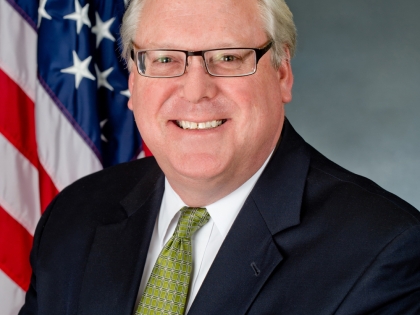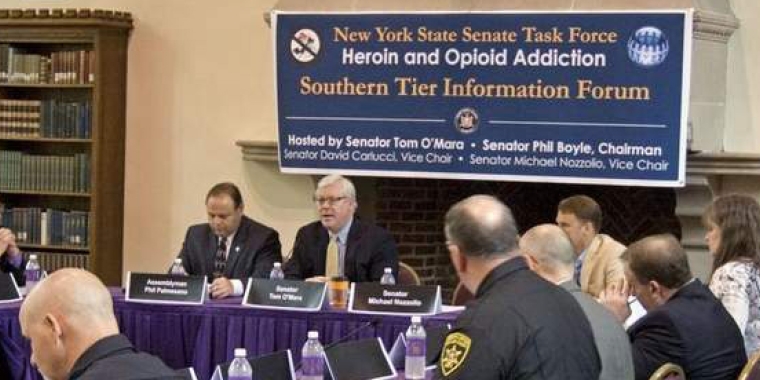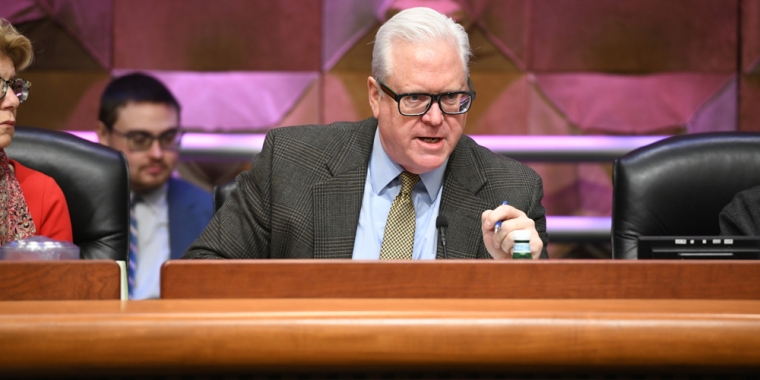
O'Mara, colleagues on Senate Task Force on Heroin issue report, legislative recommendations to address heroin crisis (Updated, May 29th)

[Update, May 29, 2014: Read and watch more in The Leader and on WENY-TV]
Albany, N.Y., May 28—State Senator Tom O’Mara (R,C-Big Flats) today joined his colleagues on the Senate Task Force on Heroin and Opioid Addiction to issue a report and unveil a set of legislative recommendations in response to the growing heroin crisis across the Southern Tier and Finger Lakes regions, and statewide.
The legislative strategy that O’Mara will co-sponsor in the Senate was unveiled following a series of public hearings the task force has held throughout the state since early April, including one O’Mara sponsored at Elmira College two weeks ago. To date, the task force has held 18 public forums, listened to 53 hours of testimony and heard from over 200 panelists.
“I appreciate everyone on the front lines locally who joined us to help target the most effective responses to the heroin crisis. This legislative package is a product of the testimony we received at the Senate hearings,” said O’Mara. “It’s a proposed first response. We’re going to keep working to determine the most effective combination of law enforcement, awareness and education, and treatment and prevention to try to stop the spread of heroin, better protect our communities and save lives."
[watch Senator O'Mara's comments following today's news conference HERE]
O’Mara and his legislative colleagues solicited testimony from regional law enforcement officers and leaders, drug addiction counselors, treatment providers, educators, social services and mental health professionals, and other experts – as well as former addicts and current patients -- about the range of complex challenges posed by heroin including addiction prevention and treatment options, drug-related crimes, and other community and public safety impacts.
O’Mara said that the Senate’s legislative strategy focuses on a range of actions involving prevention, treatment and stricter criminal penalties.
The Senate plan includes proposals, all of which are co-sponsored by O’Mara, to:
> require OASAS and the state Department of Health (DOH) to establish the “Heroin and Prescription Opioid Pain Medication Addiction Awareness and Education Program.” The program would utilize social and mass media to reduce the stigma associated with drug addiction, while increasing public’s knowledge about the dangers of opioid and heroin abuse, the signs of addiction, and relevant programs and resources (S.7654);
> provide that naloxone kits distributed through an opioid overdose prevention program must include an informational card with instructions on steps to take following administration, as well as information on how to access addiction treatment and support services. Opioid overdose prevention programs provide those at risk of an overdose, their family members and their friends with naloxone kits and training on proper administration (S.7649);
> establish the Opioid Treatment and Hospital Diversion Demonstration Program, requiring the development of a new model of detoxification and transitional services for individuals seeking to recover from opioid addiction that reduces reliance on emergency room services (S.2948);
> improve the utilization review process for determining insurance coverage for substance abuse treatment disorders, and requires insurers to continue to provide coverage throughout the appeals process (S.7662);
> create an A-I felony for the unlawful transportation or sale of an opioid that causes the death of another (S.7657);
> facilitate convictions for operating as a major trafficker by reducing the number of people that must have participated from four to three, and lowering the minimum required proceeds from the sale of controlled substances during a 12-month period from $75,000 to $25,000 (S.7663);
> allow prosecution for a new crime when an individual unlawfully transports an opioid any distance greater than five miles within the state, or from one county to another county within the state, to address diversion and distribution of heroin and prescription drugs (S.7659); and
> provide that possession of 50 or more packages of a Schedule I opium derivative, or possession of $300 or more worth of such drugs, is presumptive evidence of a person’s intent to sell (S.7169).
The full report of the Senate Task Force on Heroin and Opioid Addiction, including a complete listing of proposed legislation, can be viewed HERE [Note: The report is in the process of being amended to include more detailed information on the Elmira hearing and the Task Force's other, more recent forums]
The bipartisan Senate task force was created earlier this year at a time when local police departments, including many across the Southern Tier and Finger Lakes regions, were pointing to the alarming rise in the availability and use of heroin. According to figures from Cayuga Addiction Recovery Services, the numbers of 19-to-25 year olds in the Southern Tier and Finger Lakes treated for drug abuse increased more than 35 percent from 2007 to 2012.
O’Mara has been highlighting the proliferation of heroin and meth across the Southern Tier and Finger Lakes over the past few years. He said that he hopes the Legislature and Governor Andrew Cuomo will act on the Senate’s legislative recommendations for combating, preventing and treating heroin’s spread before the end of the current legislative session in late June.
A 2012 federal survey on drug use and health reported that the number of people who said they had used heroin in the past 12 months rose from 373,000 in 2007 to 669,000 people in 2012. The National Institutes of Health (NIH) has estimated that approximately 23 percent of those who use heroin become dependent on the highly addictive drug.



